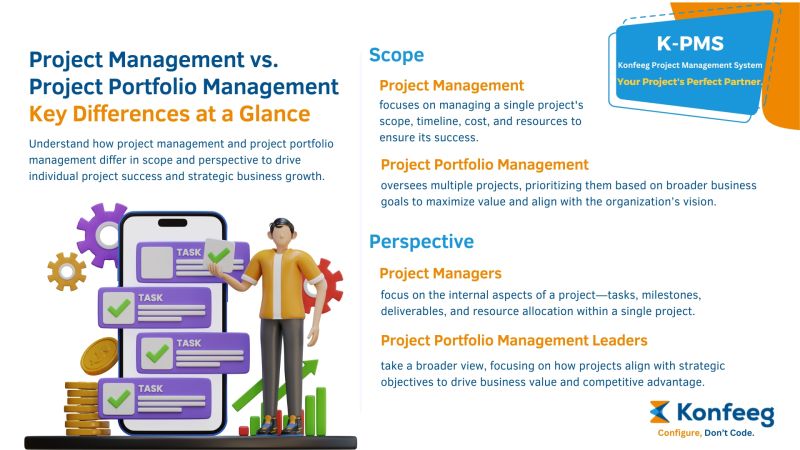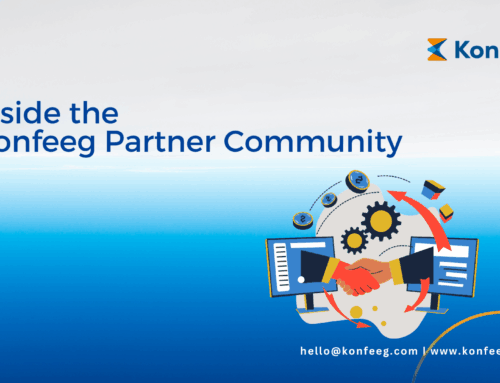Any organization will have its own set of goals and objectives that it will seek to accomplish, be it the introduction of a new product, penetrating a new market, or better servicing customers. It is one thing to have a bold vision, especially if the organization’s growth requires it. However, it is another undertaking to implement and manage many activities concurrently in the right way. And for such reasons, project portfolio management comes in.
Table of Contents
What is Project Portfolio Management?
At its essence, project portfolio management looks at the activity of an organization as an integrated set of initiatives working together to achieve certain strategic objectives. In project management, the approach is restricted within the limits of a single project.
More specifically, project portfolio management consists of four main elements:
- Project selection and prioritization – Where there are more projects than time or other resources, measuring each project’s targets, costs, risks, and other competing initiatives becomes necessary. PPM assists in ascertaining which projects should be financed and prioritized in terms of their alignment with business objectives.
- Resource allocation – Each project will require people, funds, machines, and other resources to be allocated efficiently. PPM takes a wider view of demand and ensures the right resources are applied to the right places at the right time.
- Monitoring progress – With so many components in motion, the performance of a portfolio is not straightforward. PPM develops benchmarks, reports, and dashboards to maintain project interrelationships and align projects to the overall goal.
- Optimization – With analytics of historical outputs and outputs, PPM can uncover overlapping ventures and how those ways might improve the said overlapping ventures’ results.
The Power of a Portfolio Perspective
There are certain benefits of project portfolio management, which are as follows:
- Synergy identification: The advantages of some projects may become greater while costs are lower, and the risk of cost overruns is completely eradicated if these projects are undertaken together synergistically.
- Strategic alignment assurance: Ensure initiatives that do not promote objectives and goals that rank the highest in the hierarchy are not featured in the portfolio view.
- Resource optimization: Unique skills, monetary resources, equipment, or other limited resources may be rationally utilized in various projects based on the projected benefits.
- Risk management: Interdependencies help leaders appreciate the unobvious risks under normal management of monthly reports of work-planning-appraisal and hence contribute to risk reduction strategies.
Common Project Portfolio Mistakes to Avoid
Even though the concepts of PPM may appear simple, bringing them to fruition is a painstaking effort. Going forward, let us examine in depth some of the most common mistakes that should be avoided:
- Lack of clear strategy or goals – In the absence of a clear strategy and focusing on priorities, the decisions relating to the portfolio are usually political rather than value-based. Make sure everyone is clear about what the end goals are.
- Lack of proper evaluation criteria – It’s impossible to compare potential projects and measure success without metrics linked to strategy.
- Overly complex or manual processes – Tedious workflows mean tasks go uncompleted and status falls out of date. Automate routine PPM activities.
- No stakeholder buy-in – Without commitment from senior leadership and management, collaboration is most challenging. Promote the portfolio management approach very early and very regularly.
- Poor documentation – Failing to capture any assumptions, problems, solutions, or results means that organizations are bound to face the same issues again and again. Maintain proper records.
Project Management vs. Project Portfolio Management
Although project management and project portfolio management are related terms, two major differences need to be highlighted.
Scope – Project management is concerned with single projects from the point of initiation till closure, addressing scope, costs, scheduling, and resources for only one undertaking. PPM manages a company’s projects concurrently as a dynamic collection based on high-level objectives and priorities.
Perspective – Project managers concentrate inwardly on tasks, milestones, and deliverables. PPM leaders take a wider view of external business factors and the portfolio’s capabilities to influence strategic positioning and value creation through selective investment in certain initiatives.

Project Portfolio Management Best Practices
Organizations can effectively leverage project portfolio management if they are armed with the appropriate strategies and mechanisms. Below are some of the potential best practices:
Governance
- Appoint a leader for PPM who is responsible for making decisions at the portfolio level.
- Establish governance of approval, request of funds, and reporting processes.
Maturity Models
- Set up maturity objectives and realize them in stages incorporating PPM constructs.
- Implement only the simplest means of portfolio reporting initially and put it to broader use in the forthcoming future.
Dashboards and Reporting
- Systematically Monitor overall portfolio performance until completion.
- Include executive summaries and interactive dashboards for the relevant stakeholders.
Resource Management
- Distribute the burden of work among the teams using the integrated resource view.
- Dynamically balance the capacity based on the expected portfolio.
Review Processes
- Establish monthly health checks on projects and monitor for warning flags.
- Hold occasional portfolio replenishment reviews.
Documentation
- Retain one complete project file for each project coding and revision activity.
- Record every meeting’s deliberation, outcomes, and assignments.
Konfeeg for Better Project Portfolio Management
Today’s business environment demands that organizations extract value from their endeavors. By viewing projects as an interconnected portfolio system rather than atomized initiatives, leadership accesses a powerful framework for strategic success through the centralized discipline of Project Portfolio Management. Following established best methods holistically while sidestepping common blunders, any organization can start unlocking the hidden potential in its portfolio to meet goals more efficiently.
Konfeeg Project Management System (KPMS) is a no code solution that empowers smooth project portfolio management. Write to us at hello@cloudely.com to receive a free trial of Konfeeg PMS.






